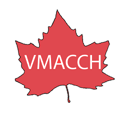The Laquians: 50 years
of Filipino-Canadian History
History, Southeast Asian, Editorials & Essays
By Carlito Pablo
Retired Vancouver couple Aprodicio and Eleanor Laquian are writing a book about the half-century of Filipino migration to Canada that is as much a people's chronicle as their own story in their adopted country.
Canada has the second-largest Filipino community in the world, behind only the U.S., the Laquians said in an interview with the Georgia Straight. But until the 1960s, they noted, most Filipinos knew very little about Canada, which many imagined to be a land of snow and Eskimos. Some, according to them, had seen pictures of Niagara Falls and thought it was entirely an American landscape.
The Laquians have lived in and out of Canada since arriving in Ontario as a young couple with their two children in 1969. It was during this decade, they said, that Filipinos were officially categorized as a distinct ethnic group in Canadian-immigration statistics. Back in 1964, according to their research, there were only 770 Filipinos living in the country.
For the past 38 years, the authors have travelled all over the nation, meeting Filipinos from all walks of life, and finding some as far north as Nunavut. In 1972, they drove from the Atlantic to the Pacific coast to interview Filipinos in such places as Wawa, Chicoutimi, Flin Flon, Moose Jaw, Medicine Hat, and Alert Bay for Eleanor's master's thesis.
Starting in 2006, the two teamed up again to take a look at the Filipino diaspora that has gained more than a toehold in Canada's multicultural society. Aside from poring over immigration records and conducting a survey of newcomers, they also renewed acquaintances with some of the people they interviewed in 1972.
"It was really a process of looking back," Aprodicio said. "There has not been a written nationwide history of Filipinos in Canada at all. This is the first."
Eleanor noted that available records indicate that a handful of Filipino doctors and nurses on the U.S. Exchange Visitors program came to Canada in the 1950s to have their visas renewed from outside the U.S. as required then. "For them, Canada was a mere steppingstone to get back to the U.S.," Eleanor said. "Some chose to stay to see what it's like here in Canada. They never left."
In the decades that followed the arrival of these accidental immigrants came waves of Filipinos who have come to regard Canada, according to the authors, as a land of promise like the U.S. but a "more peaceful" and "a kinder, gentler nation".
According to Citizenship and Immigration Canada, the Philippines is the number three source of new permanent residents in the country after China and India. In 2005 alone, 17,525 Filipinos landed in various ports of entry. In the first half of 2006, according to CIC's on-line statistical newsletter, The Monitor, some 9,800 Filipinos made their way to Canada.
Leo Cunanan, a 71-year-old resident of North Vancouver, has been in Canada for 36 years, and he told the Straight that a historical account of the Filipino migration would help the new generation understand their roots. Vancouver-based youth worker Honorio Guerrero said in a separate interview with the Straight that without such an understanding, the young won't be able to grasp the meaning of what it is to be a Filipino-Canadian.
A March 2005 study by Statistics Canada projected that in 2017, when Canada celebrates its 150th anniversary, there would be at least 540,000 Filipinos in the country's expected total population of 34.5 million.
The study, entitled Population Projections of Visible Minority Groups, Canada, Provinces and Regions, used as its basis the 2001 census figure of a total population of 30.6 million, of which at least 315,000 are Filipinos.
The same study projected that from the at least 65,000 Filipinos in B.C. in 2001-of which the bulk, at least 58,000, reside in Vancouver-the Filipino population in the province will grow to more than 123,000 in 2017, with Vancouver's share at more than 112,000.
In their first few years in Canada, the Laquians lived in Toronto, Ottawa, and Sharbot Lake in Ontario, building successful careers in government and later in various bodies of the United Nations during the 1980s. In 1991, they settled in Vancouver, where Aprodicio was appointed a full professor and director of the UBC Centre for Human Settlements. Eleanor served as manager of administration and programs at the UBC Institute of Asian Research from 1992 to 2000.
"We think most Filipinos have done well in Canada," Aprodicio said, reflecting on the almost four decades that he and his wife have been studying Filipino immigration to this country.
The Laquians divide their retirement time between travelling, writing, volunteer work at the Vancouver Committee for Domestic Workers and Caregivers' Rights-an advocacy group for Filipino temporary migrant workers-and doting on their three grandchildren. They expect their book to be published within the year.
Published at: http://www.straight.com/article-90245/looking-back-at-filipino-canadian-history on 10 May 2007.
